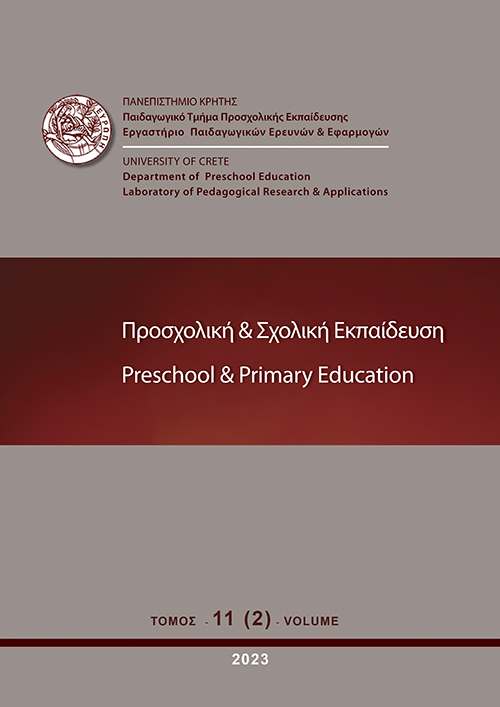Rhythm and musicality in children's poems/songs of popular oral tradition. From the context of informal education to the design of modern teaching applications

Abstract
Children's oral poems and songs are universal and diachronic phenomena which concern the scientific fields of ethnographic research and folklore studies, as well as the fields of pedagogy, linguistics and musicology. Βased on findings of a literature review, the present study focuses on the importance and role that rhythm plays in children's poems/songs in popular oral tradition. By quoting examples and citations from different languages, with an emphasis on the Greek language, the findings of the study confirm the existence of a "universal" code that connects rhythm and musicality as fundamental elements in children's oral poetry which can be found at a universal level. This is known as "Universal Children's Rhythm", named by the Romanian ethnomusicologist C. Brailoiu. It is a binary rhythm based on a series of eight beats, or eight short syllables. Its performance, in regard to orality, gives it a spontaneous, experiential and kinesthetic character with various pedagogical dimensions. The existence of children’s rhythm has occupied many theorists (Α. Arleo, Β. De Cornulier, S. Baud-Bovy), both linguistically and musically. Research in the multidimensional nature of children's oral poetry provides sufficient stimuli for further utilization in the educational process and can be enriched with pedagogical material and practices that contribute to the linguistic, musical, cultural and social development of children.
Article Details
- How to Cite
-
Kokkinos, D. E., & Koliadi-Tiliakou, A. (2023). Rhythm and musicality in children’s poems/songs of popular oral tradition. From the context of informal education to the design of modern teaching applications. Preschool and Primary Education, 11(2), 262–283. https://doi.org/10.12681/ppej.31665
- Section
- Articles

This work is licensed under a Creative Commons Attribution-NonCommercial-ShareAlike 4.0 International License.
Authors who publish with this journal agree to the following terms:
- Authors retain copyright and grant the journal right of first publication with the work simultaneously licensed under a Creative Commons Attribution Non-Commercial License that allows others to share the work with an acknowledgement of the work's authorship and initial publication in this journal.
- Authors are able to enter into separate, additional contractual arrangements for the non-exclusive distribution of the journal's published version of the work (e.g. post it to an institutional repository or publish it in a book), with an acknowledgement of its initial publication in this journal.
- Authors are permitted and encouraged to post their work online (preferably in institutional repositories or on their website) prior to and during the submission process, as it can lead to productive exchanges, as well as earlier and greater citation of published work (See The Effect of Open Access).


